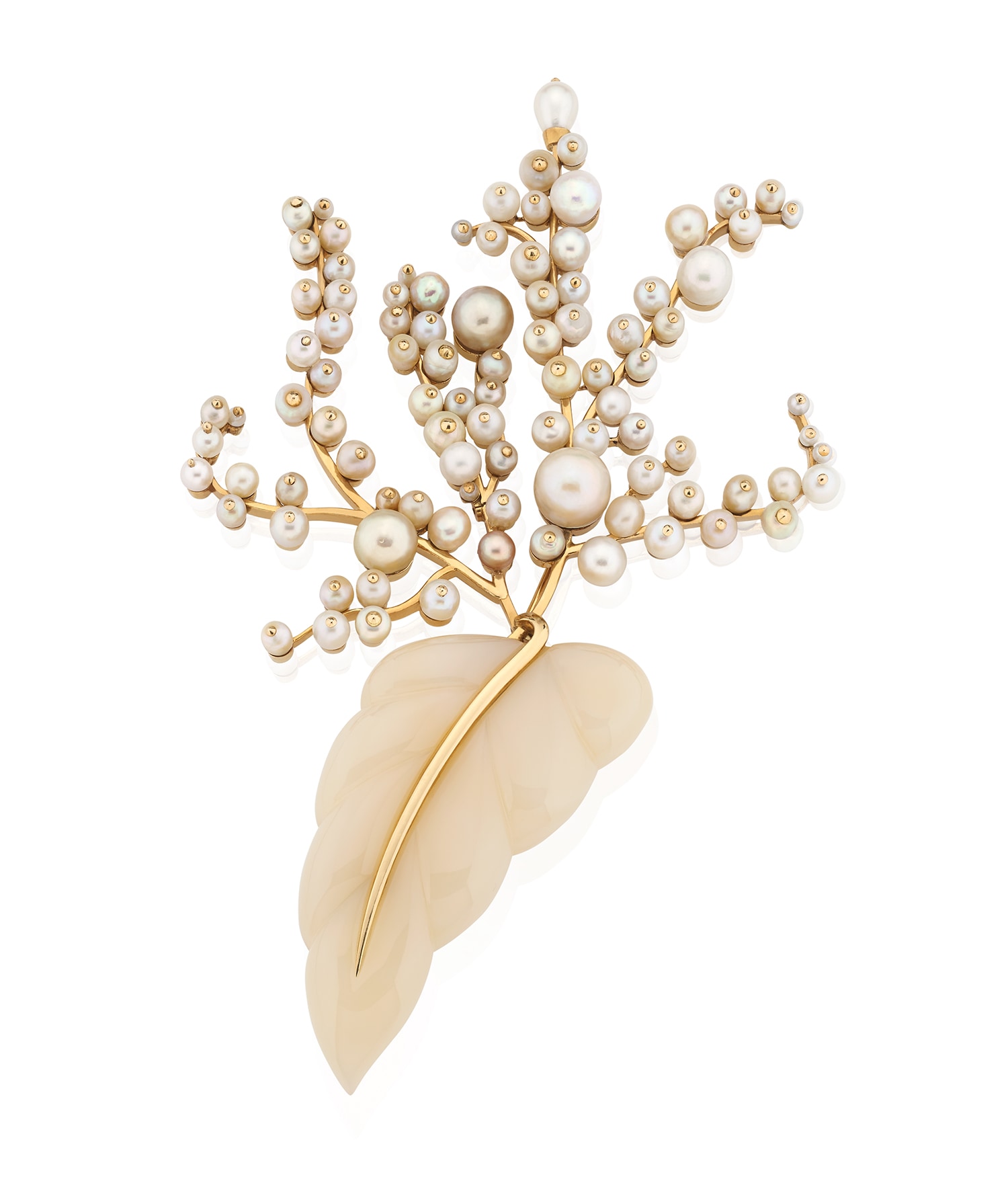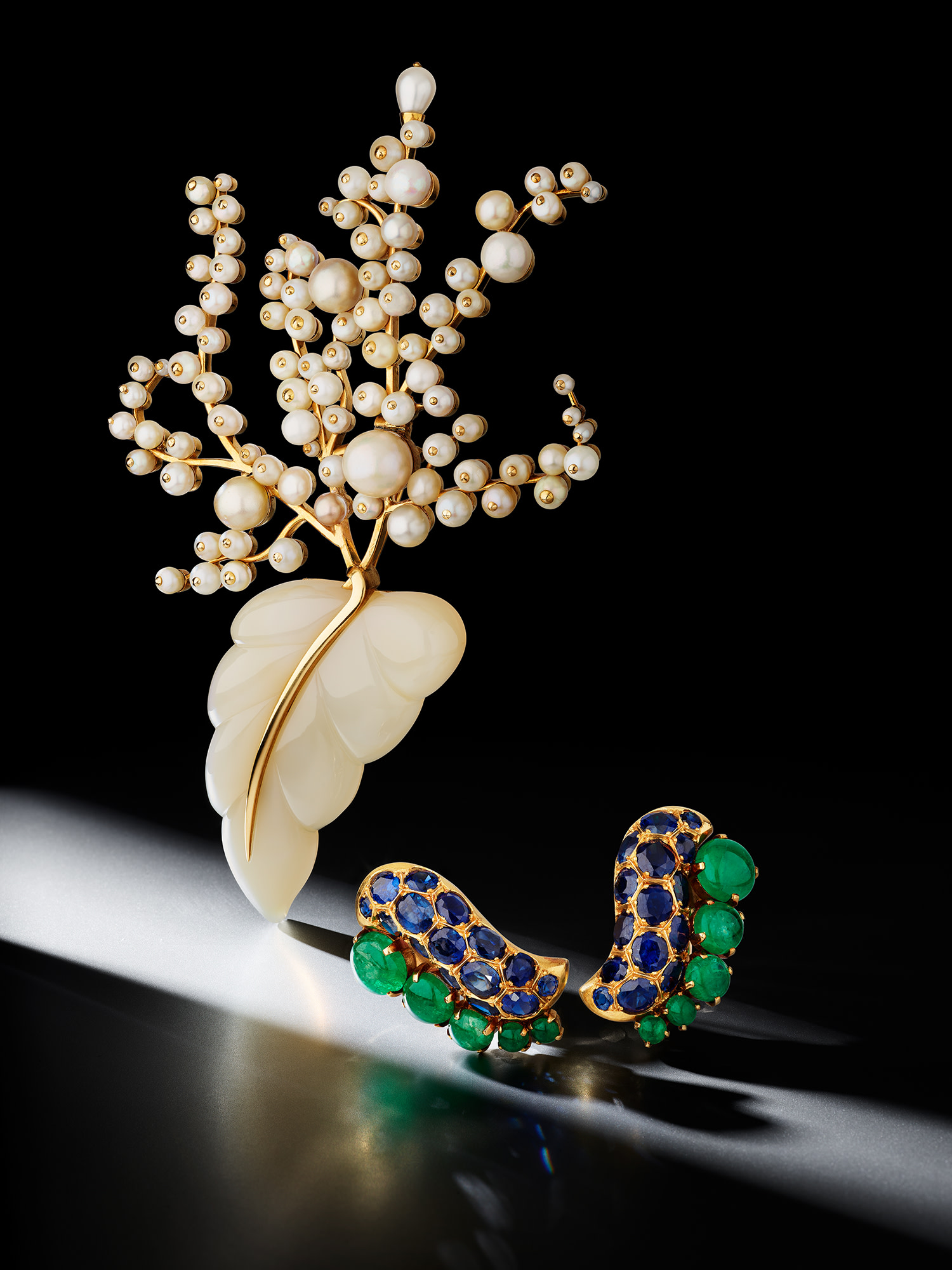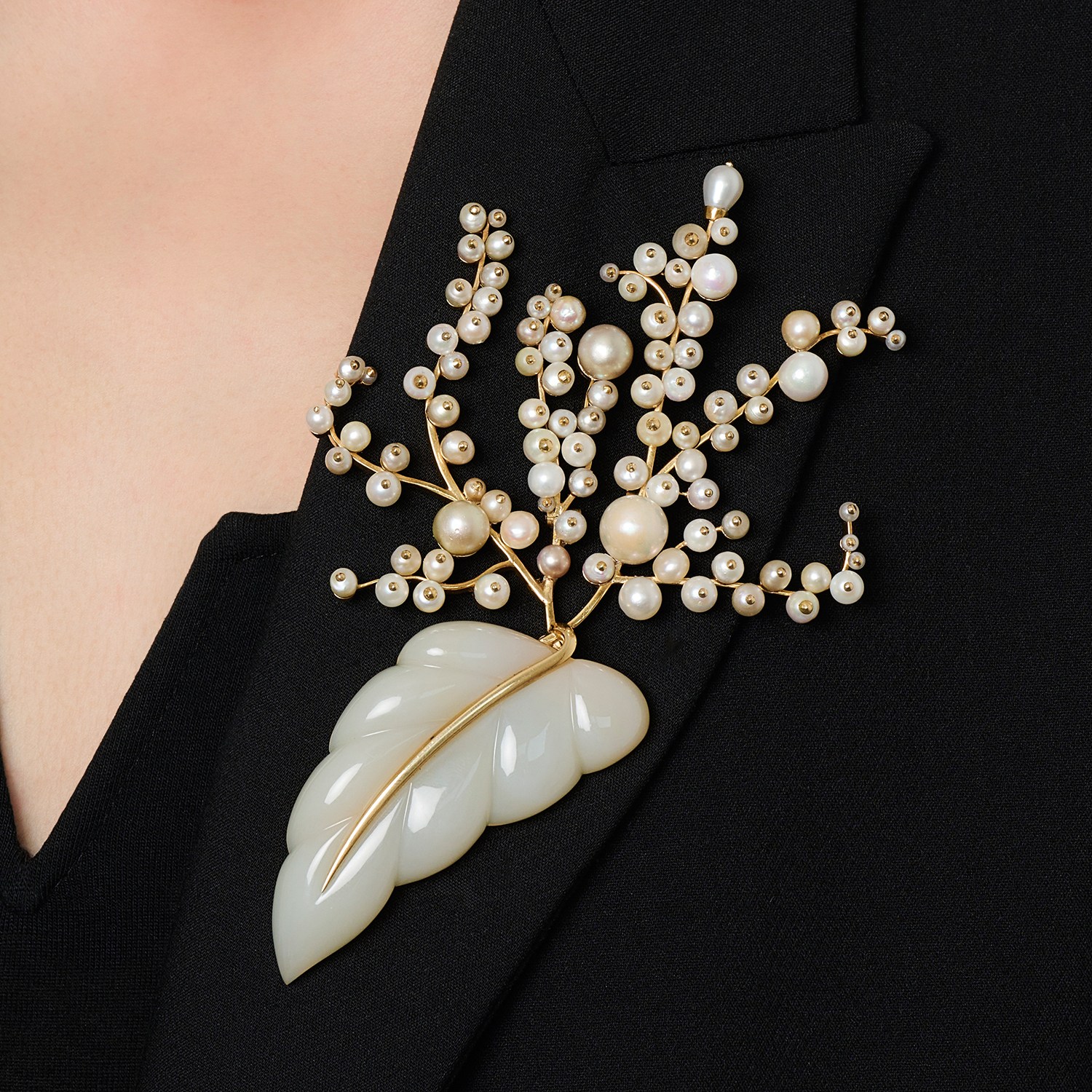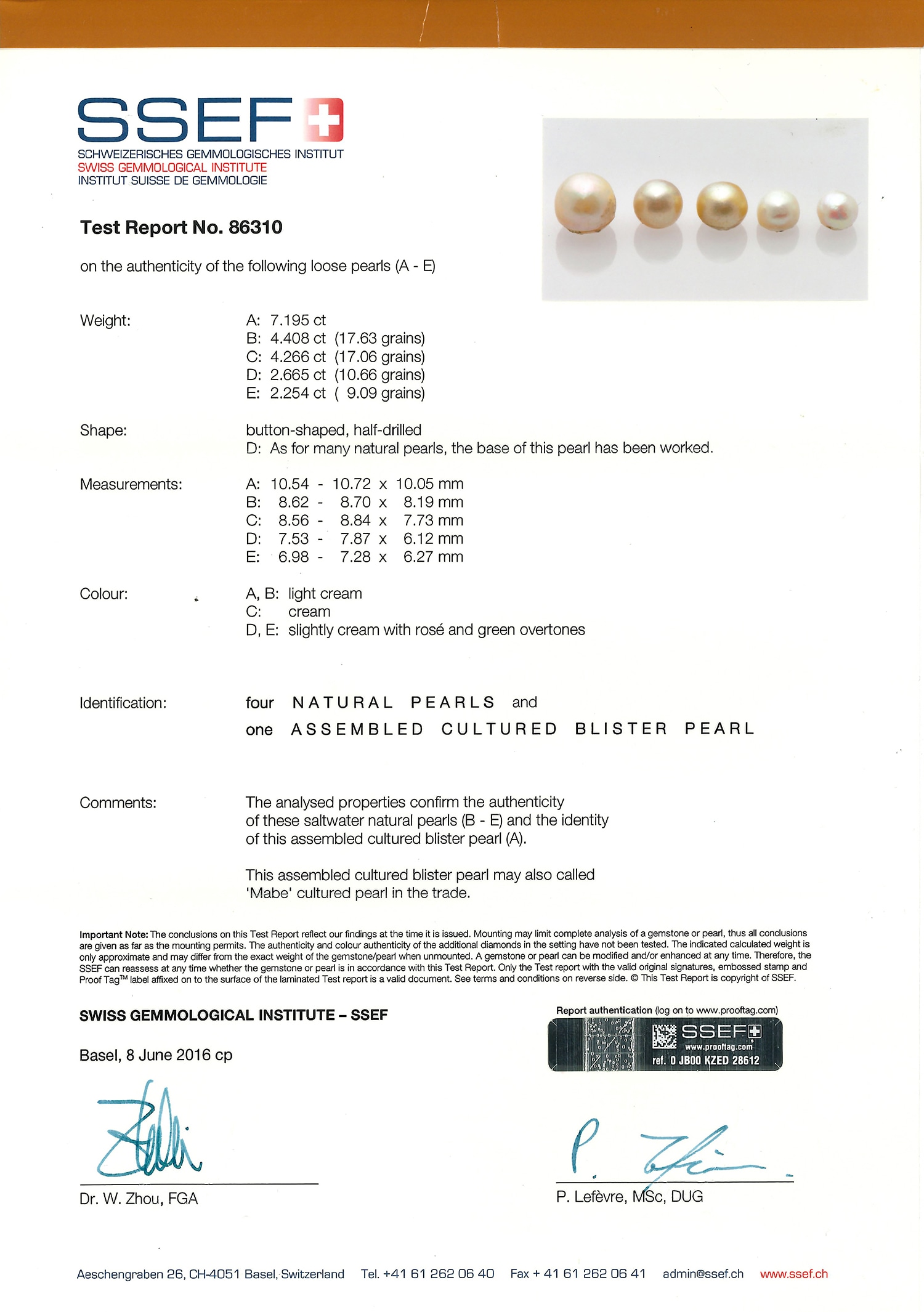











393
Suzanne Belperron
Chalcedony, natural pearl and cultured pearl brooch, circa 1955
Full-Cataloguing
Bold and enigmatic, Suzanne Belperron (1900-1983) was a visionary and a pioneer of 20th century jewellery design. Although not much is known about her, her legacy lives on through her timeless creations, which celebrate individuality, innovation, and audacity.
Suzanne Belperron was born in Saint-Claude, France, a town renowned for diamond and gemstone cutting. With a keen eye for design from a young age, Belperron pursued her studies at the Institut Supérieur des Beaux Arts de Besançon and in 1919, she moved to Paris where she was hired as a model-maker and designer by Jeanne Boivin, the widow of the late René Boivin, at his eponymous maison.
Throughout the 1920s, she created jewels for Maison René Boivin that pushed aesthetic boundaries and celebrated her avant-garde spirit. Distinctive from the prevalent Art Deco style, which favoured geometric designs, Belperron imbued her work with naturalism, weaving craft with artistry to produce sculptural pieces that uniquely blended precious gems with semi-precious stones.
In 1932, Belperron resigned from Maison René Boivin and joined Bernard Herz, a precious stones and pearls dealer, and one of Boivin’s suppliers. For the rest of the decade, Belperron’s curiosity and skill continued to define her artistic identity. She explored the connection between colour and form, seeking inspiration from the versatility of natural motifs, modern aesthetics, and exotic cultures. Fascinated by nature’s abundant wonders and the world’s cultural diversity, Belperron experimented with the interplay of unconventional materials to bring volume, movement, and sensuality to her pieces.
Throughout the 1930s, Belperron’s illustrious work gained recognition and her creations grazed the covers of iconic fashion magazines, such as Vogue and Harper’s Bazaar. Her clientele grew with her influence, and some of her most prestigious collectors included Christian Dior, Elsa Schiaparelli, the Duke of Windsor, and the Aga Khan.
At the dawn of World War II, Bernard Herz signed over his company to Belperron. She kept the venture alive until his son, Jean Herz, a survivor of the war, returned to Paris and joined her as a business partner, renaming the firm Jean-Herz Suzanne Belperron, S.A.R.L.
In 1963, Belperron was awarded the Chevalier de la Légion d’Honneur, and just over a decade later, the Jean-Herz Suzanne Belperron, S.A.R.L. company was dissolved.
Suzanne Belperron died in 1983, after a rich career spanning 56 years. She left behind an oeuvre that became a major influence in the canon of modern jewellery, with creations that were artworks in themselves, crafted with purpose, flair, and ingenuity. Fiercely original and instantly recognisable, her jewels stood as emblems of creative freedom, yet they were never signed. ‘My style is my signature,’ Belperron once stated, a philosophy that was integral to her identity and a testament to her talent.
Suzanne Belperron
French | B. 1900 D. 1983Suzanne Belperron is acknowledged today as one of the most original and influential jewelry designers of the 20th century, a woman designing for women, in a style way ahead of its time, that remains as strikingly modern today as it was almost a century ago. Yet her name had sunk into oblivion until the 1980s, when, aided by the 1987 sale of the Duchess of Windsor’s jewels, her talent and the timeless modernity of her designs began to be recognized and her story explored. Born Suzanne Vuillerme, in 1900 in Saint-Claude, in the Jura region of France, she studied at the École des Beaux-Arts in Besançon, where her signature themes and influences, such as the fish-scale pattern, were already visible in her prize-winning work. She made her way to Paris in 1919 and was taken on by Jeanne Boivin, who had assumed control of the celebrated jewelry house after the death of her husband, René Boivin in 1917.
Accounts vary as to whether Suzanne started out as a salesgirl, or as a designer-modelmaker, but certainly before long her designs, always under the Boivin name, were hailed as the height of contemporary elegance by a coterie of artistic intelligentsia. In 1924, the year Suzanne married Jean Belperron, an engineer from Besançon, she was made co-director of the Maison Boivin. Her ideas, her daring originality, her values, and her own innate style meshed perfectly with those of Jeanne Boivin. Her versatility enabled her to move effortlessly from prevailing modernism – the stepped, layered Escalier designs – to inspirations from ancient civilizations and exotic cultures, Egypt, Asia, and Africa – all the while injecting her feminine sensibility, combining geometry and stylization with fluidity and sensuality.
In 1932, she left Boivin to work with the gemstone and pearl merchant, Bernard Herz, and here she was given credit as the creator of some of the most sophisticated and sought-after jewels of the day, fashionable yet beyond fashion, the badges of style worn by an illustrious clientèle, including Elsa Schiaparelli, Daisy Fellowes, Diana Vreeland and the Duchess of Windsor. Her celebrated jewels of carved smokey or rose quartz, amethyst, or chalcedony were crafted by the lapidary, Louart, while her jewels were fabricated by Groené et Dard. She steadfastly refused to sign her jewels, famously saying, “My style is my signature.”